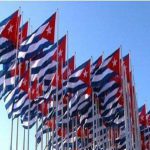The history of Cuban science has Carlos Juan Finlay, an epidemiologist from Camagüey, whose main world contribution was his explanation of the mode of transmission of the yellow fever, who lived between 1833 and 1915.
Although for twenty years its discovery was not taken into account by the academic world of the time, the theory of Dr. Juan Finlay on the mode of transmission of the Yellow Fever was confirmed and putting into practice what the Cuban scientist had learned, the American company, in charge of the construction of the colossal work of the Panama Canal, was able to complete the project.
Since the first decades of the 19th century, a good number of doctors had ruled out that the disease was transmitted by direct contagion, that is, by contact with a patient or with his secretions, excretions or belongings.
The anti-pollution version of this evil predominated, which attributed it to certain conditions of the natural environment, something like polluting effluvium.
On August 14, 1881, the Cuban scientist presented his work to the Royal Academy of Havana. The mosquito hypothetically considered as a transmission agent of yellow fever.
Thanks to a series of precise deductions, from the habits of the different species of mosquitoes existing in Havana, Finlay correctly indicated that the transmitting agent of yellow fever was the female of the species of mosquito that we know today as Aedes Aegypti.
After his death on August 19, 1915, José A. Finlay transcended history, creditor of universal gratitude, not only for his work in relation to yellow fever, but also because he discovered and solved the terrible problem of infantile tetanus.






